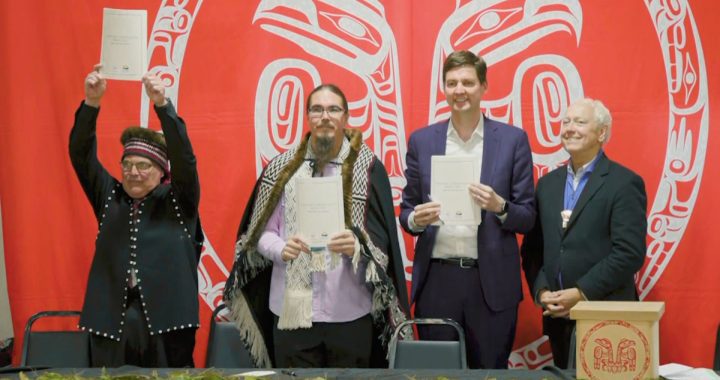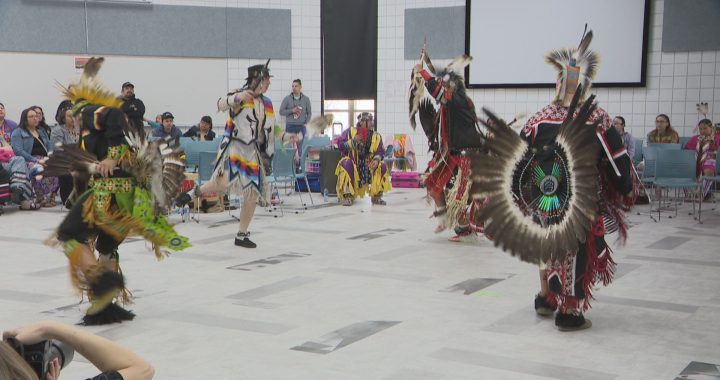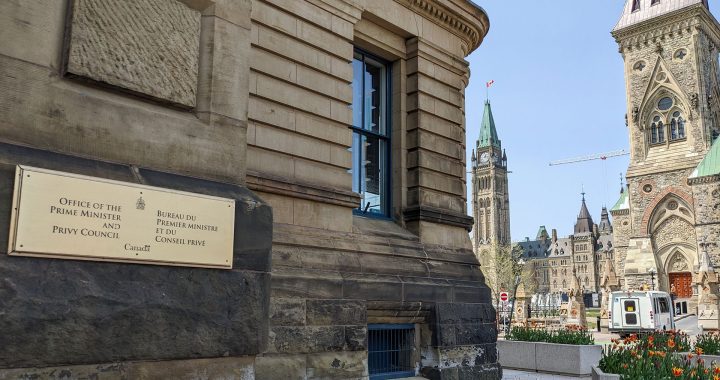Nunavut residents have faced down an awful lot over the last 12 months. From political turnover to political protest, the territory has seen some firsts this year.
Some of those firsts were momentous. Others, residents would rather forget.
APTN National News video journalist Kent Driscoll takes a look at the year that was, where 2021 began just the way 2020 ended—with COVID-19 taking up a lot of the space in the room. Particularly, the room at the territory’s legislative assembly.
This year also led to a protest movement unlike anything Nunavut has ever seen. The Mary River iron ore mine is located in between Arctic Bay and Pond Inlet.
Protesters travelled to the mine by snowmobile and blocked the runway and access road, right in the middle of the Nunavut impact review board meeting in Pond Inlet about the mine’s proposed expansion.
“We do not want to do this, but we are left with no other path. We have not been heard. We are here at Mary River,” they said over the radio. “We have blocked the airstrip. We have blocked the road. We have a fire going as a demonstration.”
They held out for a week, until a Nunavut judge issued an injunction. The decision about the mine is now in Ottawa’s hands. The impact review board will make a recommendation to the federal cabinet, who can accept or reject it.
It was also a year of political change, and some of it involves people who were big players in the mine dispute.
Lori Idlout was the lawyer for the protesters. Now, she’s the New Democrat MP for Nunavut. She replaced Mumilaaq Qaqqaq, who decided not to run for a second term. Qaqqaq did release a scathing report into Nunavut’s housing problems. Her methods were questioned by Nunavut’s old guard politicians, but she stood firm.
“A lot of people, to put it bluntly, were very angry with me, for not following GN (Government of Nunavut) process and procedure. I don’t work for the GN. I don’t work for the housing corporation,” she said. “I work for the constituents. I have no obligation to go through any proper policies and procedure.”
Another big shift in the political landscape was late in the year, when P.J. Akeeagok defeated incumbent premier Joe Savikataaq to become the new premier.
Mary Simon was selected this year as the first Inuk to hold the role of governor general and has been using Inuktitut on the job, frequently. Simon isn’t from Nunavut, but the Inuktitut is being heard loud and clear.
Leaving the world of politics, on Oct. 12 Iqaluit lost drinking water for 60 days.
An old fuel tank was the culprit. It was lodged underground next to the city’s water filtration plant. Fuel from the tank got into the system, making the water toxic enough that you couldn’t boil the problem away.
For the next two months, the armed forces fought the elements to try and provide water. They were successful for 13 days in total. The Nunavut government flew in bottled water, and that was Iqaluit residents’ drinking water for two months.
As for the tank? It was buried there in 1995. No one knows why—including Iqaluit’s mayor.
“It was cemented over, there was a staircase, there was three feet of earth put over it, to be never found again. How does that make any sense?” said Mayor Kenny Bell.
In 2022, we’re still going to be trying to make sense of why that tank was buried next to the water supply.
We’re still going to be hearing about Mary River, as the federal cabinet will have to decide about the expansion.
And we’re still going to be hearing about COVID-19.









